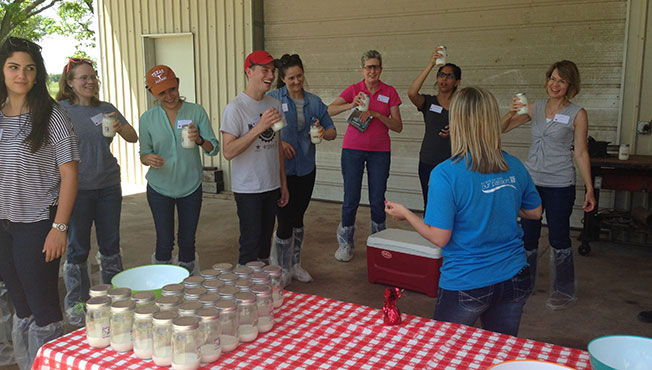With only 2 percent of Americans directly connected to farming, it’s no surprise most doctors and dietitians haven’t stepped foot on a dairy. But where are they getting the information they pass on to their patients? Thanks to Dairy MAX, more and more are getting information straight from the horse’s mouth on dairy farms across Texas.
Katie McKee, who works as a program coordinator in Dairy MAX’s health and wellness department, says her team’s focus is working with doctors and dietitians to help them understand the scientific recommendations behind dairy. She says they’ve learned health professionals feel extremely separated from agriculture. Therefore the organization is doing its part to bridge the gap in a meaningful way.
“We know consumers and patients and clients are more interested than ever in knowing where their food comes from,” McKee says. “They want all of that to be transparent from beginning to end. We really want to show people where their milk comes from because we're so proud to be working for our dairy farmers. With all that said, we really made an effort to bring our dietitians and our physicians out of their offices and onto the farm.”
Farms like brothers Brian and Gary Kainer’s in Weimar, Texas have opened their doors and barns to help show what it’s really like.
Brian says it was fun to be able to host a recent tour and get an idea of what people want to see from dairy operations. He says the participants were extremely curious about cow comfort, hormones in milk and antibiotic use. And when it came to talking about cow nutrition, they were eager to learn what their counterparts in the dairy business do to keep the cattle healthy and nourished. He couldn’t be more thrilled Dairy MAX is reaching out this way.
“Anything that we can do to promote milk is beneficial,” Brian says. “And for these influencers to hear more about the wholesomeness and the benefits of drinking milk while learning about life on the farm — it’s a win-win.”
He says he especially enjoyed seeing so many smiling faces on the tours.
“I think they left with a favorable impression of the dairy, of milk, of what we do as farmers,” Brian says. He thinks right.
McKee says on the first two tours they were able to convert participants’ feelings on dairy from neutral to positive and from positive to very positive. The proof is in the pudding: evaluation after evaluation is filled with high praise and sincere thanks for the invitation. But the tours aren’t done for praise, McKee says.
“We’re just trying to start a conversation about where we are with agriculture in the 21st century,” she says. “I think things have changed and we want people to be aware. Our farmers are doing a lot of great things to help provide the foods we need, especially healthy foods like milk, cheese and yogurt.”
“Another thing is we really want dietitians and doctors to be able to communicate to their patients where their food comes from,” she says. “I know, being a dietitian myself, people have a lot of questions about a lot of different things and we want to provide that knowledge so they can say when you buy milk, here's how it comes. Here's the process from farm to fridge; and also here's why that product is important to your health.”




